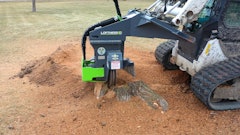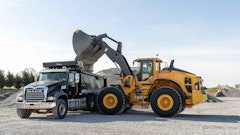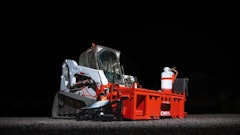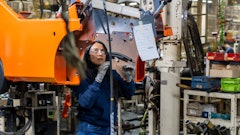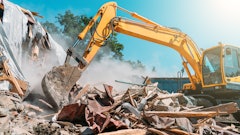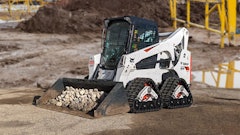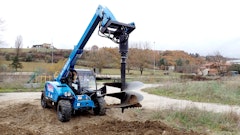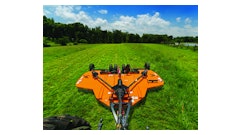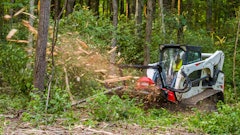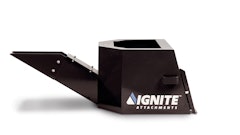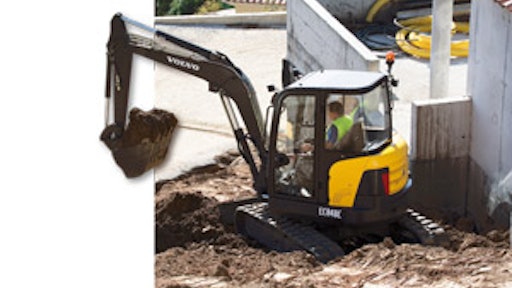
Attachments provide the opportunity to boost the productivity and flexibility of your equipment. But select the wrong attachment for the machine size and/or capabilities, and you can actually reduce your customer’s operating performance - or worse.
To avoid common pitfalls when pairing up equipment, it’s important to be aware of the limitations of both the attachment and the carrier.
Keep it stable
“Probably the most important specification for any type of machine is its tipping load or lifting capacity,” says Bill Sauber, business development manager - attachments, Volvo Construction Equipment. But you also need to understand how this is measured for the particular type of machine, since that can have a significant effect on the size of attachment that can be used.
For example, with wheel loaders and skid steers, tipping capacity is rated by measuring the load in the center of the bucket when it’s fully rolled back to its carry position. Moving the load center away from the machine will effect its tipping capacity.
“Sometimes an operator thinks that if a machine’s tipping capacity is 5,000 lbs., he ought to be able to pick up a 5,000-lb. object with a set of forks,” says Sauber. “But the center of gravity of the object may be several feet further forward than the measuring point on a bucket, and thus will overload the machine.”
Even similarly sized buckets can have different load centers. “A bucket with the same capacity as the OEM bucket, but with a different front-to-rear load center, may cause the machine to tip prematurely,” notes Randy Bauserman, product manager - utility attachments, Komatsu Utility Division. “As such, it’s critical to use attachments that respect the OEM load center.”
When it comes to excavators and backhoe-loaders, manufacturers have made it easier to maintain stability by providing load charts with the machines. Yet, these are only helpful if you know how to use them, and adhere to specified capacity limits.
Take thumbs, for example. According to Peter Robson, senior product manager - excavator group, Komatsu America, roughly 50 to 60 percent of excavators in the 20-ton size class have hydraulic or mechanical thumbs put on them. The problem arises as you use more powerful thumbs. “A stronger thumb is typically a heavier thumb, so you automatically start to reduce machine stability before you even pick up a load,” he states.
And because operators might be working with awkward-sized materials, there is a tendency to work further out from the machine. “When you do that, the effect on stability is even more compounded,” says Robson.
Now let’s say the excavator lift chart specifies a capability of 3,000 lbs. with a bucket at ground level 20 ft. over the side. If you weld a 1,500-lb. thumb onto the machine, you have essentially reduced the lift capacity to 1,500 lbs., Robson explains. Lifting anything above that weight could lead to a tip situation.
Stick to the limits
While undersizing a bucket can increase cycle times and subsequently reduce productivity, oversizing it can have similar results.
“It may seem that if you were moving 100 cu. yds./hour with a 1/2-cu.-yd. bucket, if you could double the bucket size, you would double your capacity to 200 cu. yds./hour,” says Sauber. This is not the case.
Overall, it’s best to resist the temptation to push capacity beyond manufacturer recommendations. “Buckets that are too large for the machine will dramatically affect the forces required throughout the duty cycle, and will ultimately wear the machine out faster, cause potential stability problems and may reduce productivity and increase fuel consumption,” says Sauber.
A backhoe or excavator bucket or bucket/coupler combination not specifically matched to machine specs might also reduce breakout force and foul the boom, adds Bauserman.
For best reliability and performance, Sauber advises selecting the largest bucket within the machine’s limitations based on the type of material being handled.
Maximize bucket breakout force
When selecting buckets for wheel or skid-steer loaders, width is an additional factor. “Selecting a bucket that’s too narrow and does not cover the tire tracks will affect machine function in digging and grading operations,” says Bauserman. “Width should be slightly wider than the dimension to the outside of the tires to allow the bucket to penetrate the ground and the tires to ride on the newly excavated surface.”
The depth of the bucket may also be an issue. “A longer bucket floor equals lower breakout force,” says Bauserman. But a longer floor on a skid-steer bucket may equal improved visibility. “This might be a good trade-off depending on the application.”
Adding teeth to the loader bucket can significantly improve its capability to penetrate hard ground and increase productivity. “We would suggest that skid-steer loader buyers have at least two buckets - one smooth edge for finish work and one with teeth for excavating,” Bauserman comments.
However, in the case of excavators, less might actually be more. “Some customers think that their penetration in really tough ground is better when more teeth are installed, but the opposite is actually true,” says Sauber.
He cites a ripper shank working in rock and frozen ground as an example. “The best fracturing occurs with the use of a single-point ripper shank because all of the excavator’s force is focused on a single point,” he says. “If the machine can generate 20,000 lbs. of bucket force, and all that force is focused on a single ripper tooth with 1 cu. in. of surface, the pressure at that point is 20,000 psi.” However, if the machine is equipped with a 48-in. bucket with five teeth, and each tooth has a point area of 1 cu. in., the force per tooth drops to 4,000 psi. If the bucket has seven teeth, the force drops even further to 2,857 psi.
Match up to hydraulics
Hydraulic attachments present some unique challenges. Consider that an oversized hammer can not only result in stability issues - especially when used at maximum reach - it can cause excessive wear on the machine from the vibration of the blows, Sauber points out.
Using too large an attachment can also result in it overheating due to limitations in the carrier’s hydraulic system. Consequently, system capabilities of both the carrier and attachment must be compatible. “Hydraulically driven attachments must be correctly matched for flow and pressure, and installed correctly to minimize system backpressure,” says Bauserman.
But it’s not always that simple. “Often, nominal flow requirements provided by an attachments manufacturer may indicate that the attachment is suited for the machine,” says Bauserman. “However, on operation, the attachment may not be sufficiently cooled, connectors may not be compatible with the OEM and high backpressure may result in either poor performance or an overheating condition.”
In addition, you need to know whether the attachment calls for one-way or two-way hydraulic flow. “Some hydraulic attachments are designed to use bi-directional oil flow, and others are designed to return oil to the hydraulic tank directly to avoid backpressure and heat,” says Bauserman.
With one-way flow attachments, it’s important to look at the attachment manufacturer’s recommendations to determine whether an accumulator should be installed on the line, says Robson. Also make sure the equipment has a good return filter to minimize ingress of contaminants from the attachment back into the hydraulic tank.
Ultimately, the optimum way to ensure attachment compatibility, as well as determine any special system requirements, is to consult with your equipment supplier. “The most common mistake when selecting attachments is omitting their distributor from the process,” says Robson.










